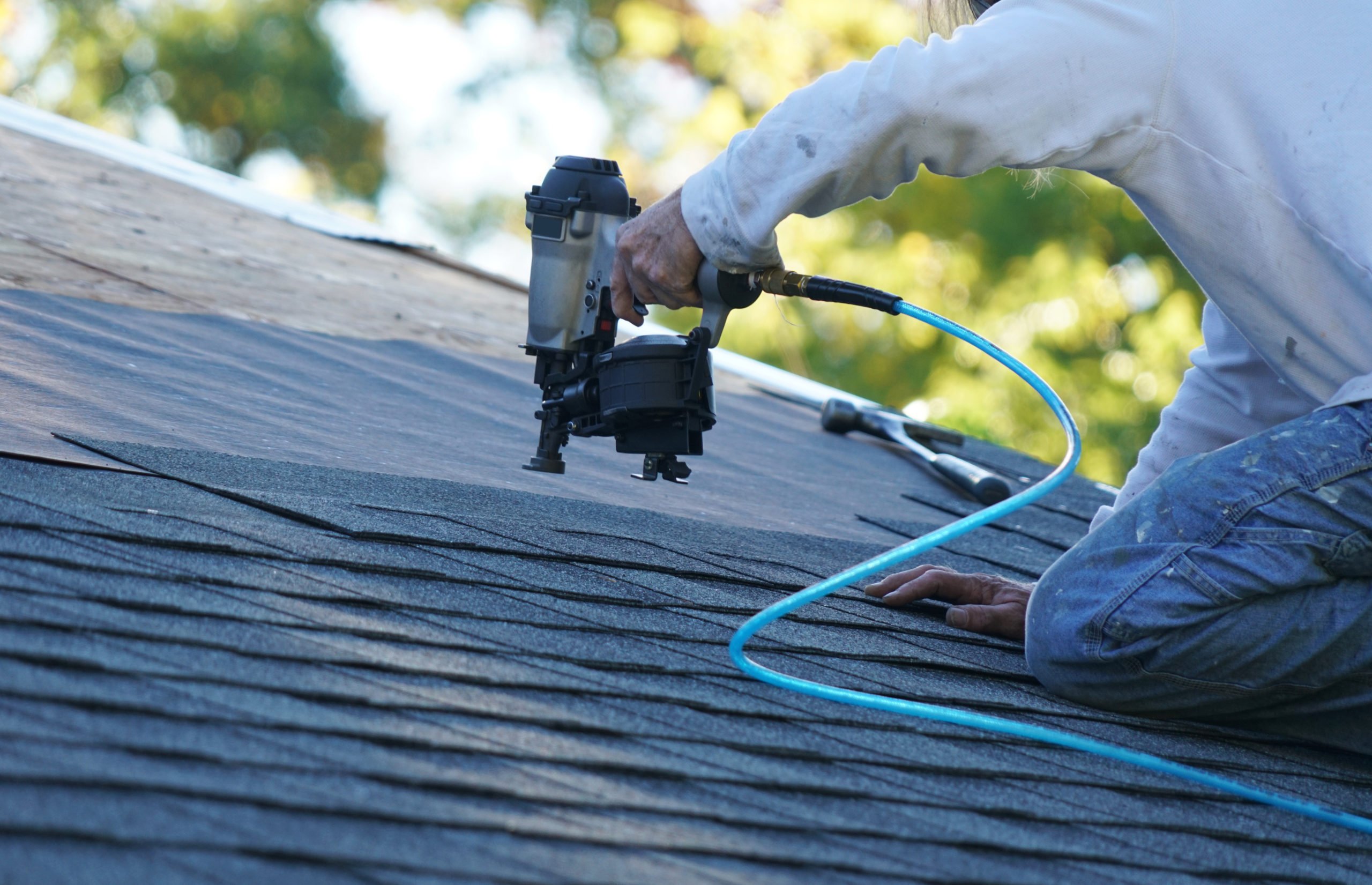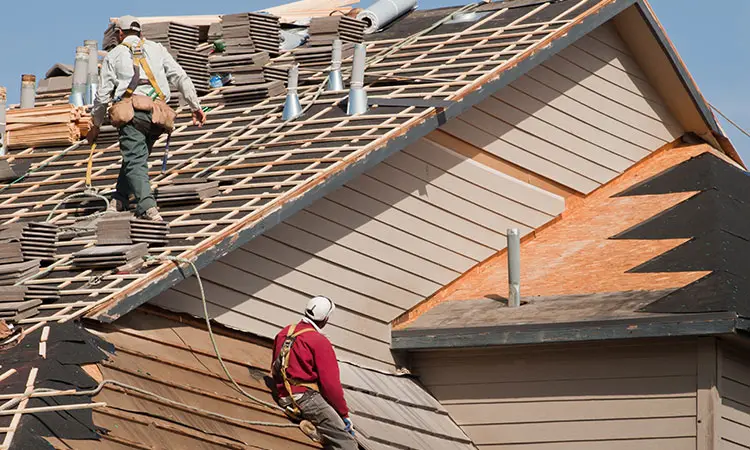Seasonal Roof Covering Repair Work Checklist: Prepare Your Roofing System for every single Climate
As a property owner, you know the value of securing your investment, and your roofing system plays an important duty in that. Each season brings unique difficulties that can impact its honesty. By complying with a seasonal roofing fixing checklist, you can stay in advance of possible problems. From wintertime ice dams to summertime warmth, each action is considerable. Let's explore exactly how appropriate maintenance can protect your home and prolong your roofing system's life expectancy.
Checking Your Roofing for Wintertime Preparedness
As wintertime approaches, it's vital to examine your roof covering to verify it can stand up to extreme climate conditions. When snow and ice build up, Beginning by examining for missing out on or damaged shingles; even a small concern can lead to considerable leaks. Next off, check out the blinking around vents and chimneys-- this location is often at risk to water breach.
Do not neglect to look for indications of sagging or uneven surfaces, as these could indicate structural issues. In addition, confirm your seamless gutters are clear; clogged up rain gutters can cause ice dams that harm your roof.
 roof repair
roof repair
Springtime Cleansing: Clearing Up Debris and Checking for Damages
When winter season's grip launches, it's best Gainesville roofing company time to deal with spring cleansing on your roof covering by eliminating particles and looking for any type of damages. Beginning by inspecting your roof covering for fallen branches, leaves, and various other particles that can catch moisture and create rot. A tidy roof promotes better drainage and stops mold development.
Next, order a durable ladder and carefully check shingles for cracks or missing out on items. Focus on locations around vents and smokeshafts, as these areas are vulnerable to leakages. Don't forget to examine your gutters, ensuring they're devoid of blockages that might cause water merging.
While you're up there, try to find signs of wear, like corrosion on metal flashing or loose seals around skylights. If you detect any concerns, resolving them currently can save you from expensive repair work later. A little springtime cleansing goes a lengthy way in keeping your roof covering's stability.
Summertime Warmth: Examining Your Roofing for Heat-Related Issues
As summer heat heightens, it's necessary to check your roofing for heat-related concerns. Look for any type of shingle damages, try to find indications of heat buckling, and assess exactly how well your roof aerates. Taking these actions now can stop bigger troubles in the future.
Inspect for Tile Damages
 roof repair
roof repair
Examine for Warm Buckling
Warmth fastening is a typical concern that can emerge throughout the scorching summertime months, and it's crucial to inspect for it on your roofing. Start by checking your roof covering aesthetically; look for any unequal surfaces or raised sides. If you detect any kind of indications of warm buckling, it's important to resolve them quickly to stop additional damage.
Review Roofing System Air Flow Effectiveness
After checking for warm fastening, it's crucial to assess your roof covering's air flow efficiency. Appropriate ventilation helps control temperature level and moisture, avoiding damage from too much warm. Bear in mind, keeping excellent air flow not only prolongs your roofing system's life yet additionally boosts your home's general power efficiency, guaranteeing comfort throughout those warm summer season months.
Rainy Period Readiness: Guaranteeing Appropriate Drain
As the stormy period strategies, you require to ensure your roofing system's drainage system prepares to deal with heavy rainstorms. Start by inspecting your downspouts and gutters, and see to it they're free from debris. Do not forget to check the blinking and seals to stop leakages and water damages.
Examine Rain Gutters and Downspouts
Begin by checking for any visible debris, like fallen leaves or branches, that might block the circulation of water. Next off, analyze the downspouts for blockages or damages; a blocked downspout can create water to overflow, possibly destructive your roofing and foundation. If you find any type of problems, resolve them immediately to stop expensive repair work.
Tidy Roof Surface Debris
Use a roof rake or broom to gently eliminate debris, being careful not to damage the roof shingles. After cleaning, check your roof covering after hefty rains to detect any kind of potential concerns early. Keeping your roofing clear of debris is essential for avoiding expensive fixings down the line.
Examine Flashing and Seals
After removing your roofing system of particles, take a more detailed check out the flashing and seals around smokeshafts, skylights, and vents. These areas are essential for stopping leaks during the wet season. Examine the blinking for any signs of rust, splits, or gaps. It's essential to fix or change it immediately if you discover any kind of damages. Next off, inspect the seals; they ought to be tight and intact. Seek any type of peeling or damaged locations that might permit water to leak in. If you discover any kind of compromised seals, think about resealing them with a high-quality roof covering sealer. Guaranteeing these parts remain in great condition will help preserve proper water drainage and protect your home from water damage throughout hefty rains.
Checking and Maintaining Roofing System Seals and Flashing
While it might seem simple to neglect, checking and maintaining roof seals and flashing is important for stopping leaks and water damage. Beginning by examining the seals around chimneys, skylights, and vents. Try to find any type of cracks, spaces, or signs of wear. It's finest to reseal them with appropriate roof covering sealer to ensure a tight fit. if you spot any problems.
Following, analyze the flashing, which routes water far from critical locations. Look for corrosion, loose areas, or bent sides. If you locate any broken flashing, replace it or secure it correctly to keep its honesty. Remember, also a tiny flaw can result in considerable problems later on.
Last but not least, don't forget to cleanse off any kind of debris that may block the seals or blinking. Keeping these parts healthy will help guard your roof against the components and prolong its life-span.
Rain Gutter Upkeep: Maintaining Water Streaming Smoothly
Because your gutters play an important function in directing rain away from your home, normal upkeep is vital for avoiding water damages and foundation issues. A stopped up rain gutter can lead to water overflow, which may damage your roof and home siding.
If you notice any type of damage, repair work or change the afflicted parts without delay. Confirm downspouts are routing water at the very least six feet away from your foundation.
Ultimately, examine that your gutters are effectively sloped, preferably a quarter inch for every single 10 feet. This incline warranties water streams efficiently towards the downspouts. Regular maintenance will certainly maintain your gutters operating successfully and safeguard your home from costly repair work.
Arranging Professional Evaluations for Comprehensive Care
Consistently organizing professional examinations is necessary for keeping your roof's integrity. These professionals can detect prospective concerns before they develop into costly fixings. Go for at the very least 2 examinations a year-- one in the springtime and an additional in the loss. This timing enables you to deal with any type of damage triggered by winter season climate or summer season tornados.
During assessments, experts will certainly examine roof shingles, blinking, and ventilation, making certain everything's in top form. They'll also inspect for signs of wear, leaks, or mold and mildew, which you might forget. Setting up these evaluations not just extends your roofing system's lifespan yet additionally offers you satisfaction.
If you're unclear regarding the problem of your roof, don't wait to call an expert. Investing in these examinations now can conserve you a whole lot later. Prioritize your roofing system's wellness, and you'll be well-prepared for whatever climate comes your way.
Frequently Asked Questions
Just how Usually Should I Check My Roof Covering Throughout the Year?
You must check your roofing system a minimum of twice a year, preferably in springtime and autumn. After extreme weather condition occasions, check for damages also. Routine assessments aid you catch problems early and save cash on fixings.
What Indications Suggest I Need a Roofing System Substitute As Opposed To Repair Work?
 roof repair
roof repair
Can I Carry Out Roof Services Myself, or Should I Hire a Professional?
You can carry out minor roofing repair work yourself if you're comfy with elevations and standard devices, but working with a specialist assurances safety and proper job. Don't take the chance of damages; it may be worth the investment for satisfaction.
What Are the very best Materials for Roofing Repairs in Various Environments?
For different environments, you'll want materials like asphalt roof shingles for moderate areas, steel roof covering for extremes, and clay ceramic tiles for warm regions. Always think about local weather patterns to ensure your roofing endures the aspects effectively.
Exactly How Do Roof Warranties Affect Seasonal Upkeep Responsibilities?
Roofing guarantees commonly specify upkeep responsibilities, so you'll need to review the terms. If you do not maintain your roof covering as needed, you could invalidate the guarantee, leaving you responsible for expensive repairs.
Seasonal Roof Repair List: Prepare Your Roofing for Every Weather
Once winter months's grasp launches, it's time to take on spring cleaning on your roof by clearing away particles and checking for any damages. Check for any type of roof shingles damages, look for indicators of heat fastening, and review just how well your roofing aerates. If you identify any kind of problems, think about getting in touch with a professional for fixings to keep your roof covering in leading form and secure your home from prospective water damages.
While it may appear very easy to ignore, examining and maintaining roof seals and blinking is necessary for avoiding leakages and water damage.